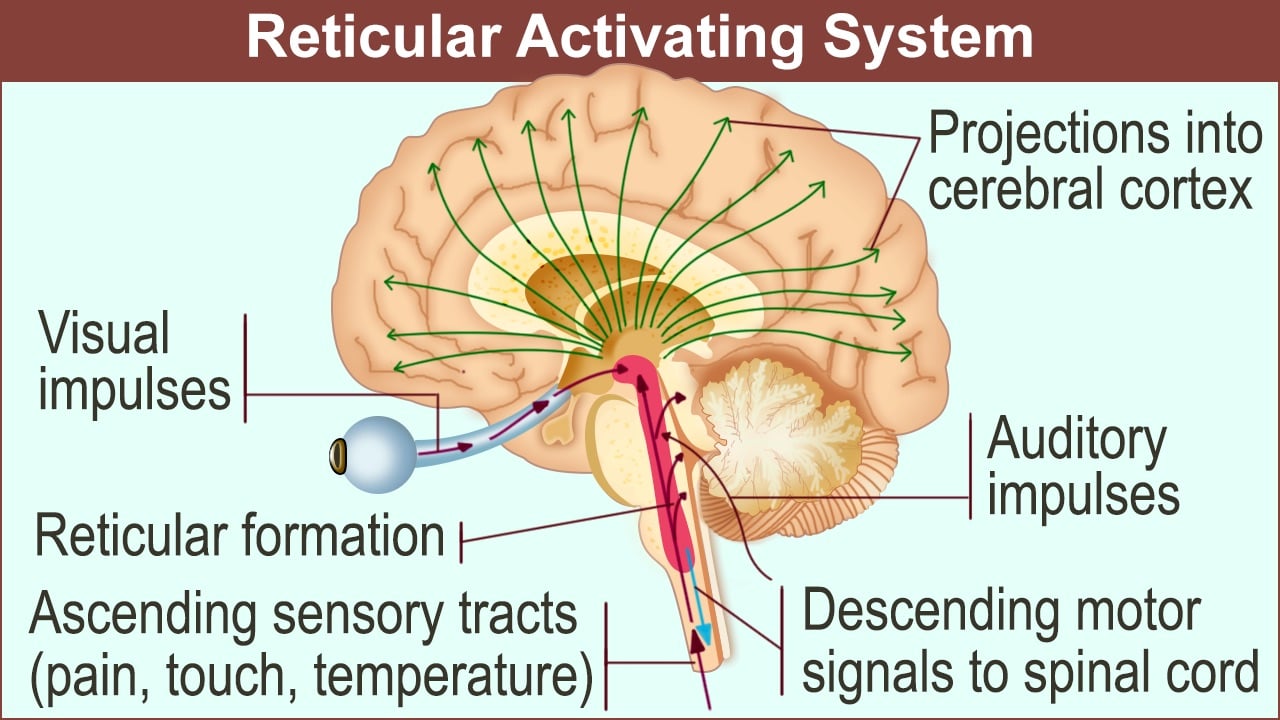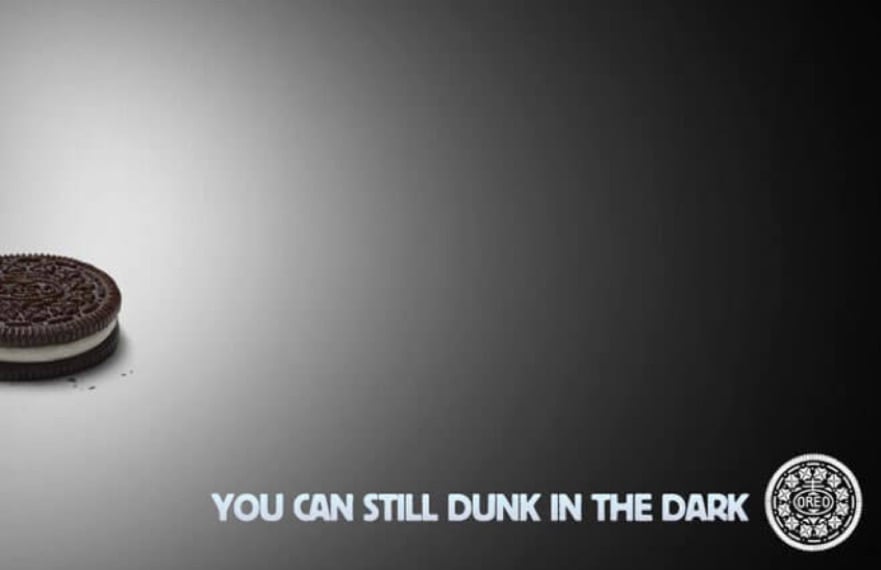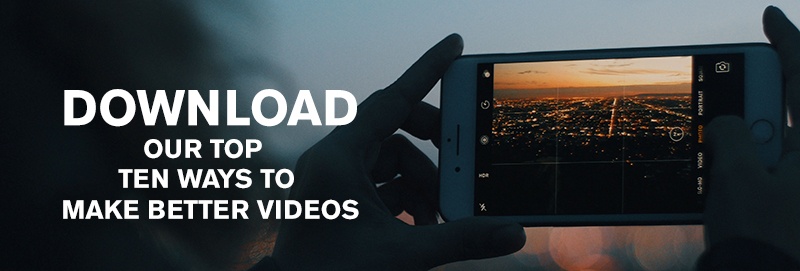Timing, they say, is everything.
Your audience are faced by a deluge of content every time they browse their social channels. Which is why it is getting harder and harder to cut through to them. Like random banner ads before them, so much content is subconsciously filtered out before they even notice it. The only way to get around it is by creating work that your audience are predisposed to engage with at the moment they see it. This is why the context in which it is viewed is essential in landing your content with them.
Subconscious Filtering?
This filtering of information is essential to allow us to focus on what is important and to stop us from going crazy from monitoring the huge number of stimuli that our bodies sense at any given moment. From thousands our brains limit us to being aware of only around 40. To do this, our RAS or Reticular Activating System (the brain’s CPU) instantaneously filters out anything which our subconscious judges to be extraneous information. This part of the brain learns very quickly what to look out for – it is why when you are looking at buying a red Volkswagen you suddenly see red Volkswagens everywhere. It, of course, also works for the things that we have learned to ignore.
 This is why we can see a hundred different ads while scrolling or browsing and never really notice them, but then one pops up with just the right thing at just the right time and boom, we click-through and buy. This is the essence of context. This is the importance of timing, which is why programmatic retargeting has been so successful (the process that continues to advertise products to you after you have visited a certain webpage). It’s why Google has grown to be, well, Google.
This is why we can see a hundred different ads while scrolling or browsing and never really notice them, but then one pops up with just the right thing at just the right time and boom, we click-through and buy. This is the essence of context. This is the importance of timing, which is why programmatic retargeting has been so successful (the process that continues to advertise products to you after you have visited a certain webpage). It’s why Google has grown to be, well, Google.
Get the timing right and an ad which cost you pennies to place can become the most valuable piece of advertising you do that day.
Nike put Tiger Wood's Masters win in context
Last weekend you may have noticed that Tiger Woods staged one of the most impressive career come backs in the history of golf, if not sport. He was once the global megastar of the sport, winning 14 major titles and being accused of ruining the game by making the rest of the world's best compete for second place. His implacable, uncompromisingly focused facade hid some challenging truths which came home to roost in dramatic fashion. He fell from grace, he lost his game and dropped out of the World's Top 1000. Most people wrote him off. Last weekend, he came back back and won his 5th US Masters - one, if not the, of the hardest fought tournaments in the sport - at the age of 43, the second oldest winner ever. It was a stunning moment in a story that has captivated the world of sport for nearly over 20 years.
Behind the scenes on Sunday, there was another level of genius/fortunate planning at work. In the moments after Woods donned the cherished green jacket of the Masters winner Nike shared an ad on their social channels which nailed the feeling of the moment. A relatively inexpensive edit which allowed them to capitalise on the estimated $22.5M worth of publicity that the brand received while Woods completed his final round. Sunday was the most watched round of golf in history. As far as content goes the edit was pretty basic – a few recuts of old footage of Tiger playing with some inspirational interview audio from his early life. For a brand like Nike the production of a piece of content like this is almost as basic it gets – it was after all a punt on their man actually winning– but it paid off in spades.
 Oreo shared this image on Twitter when the lights famously went out during the 2013 Super Bowl
Oreo shared this image on Twitter when the lights famously went out during the 2013 Super Bowl
Like the Oreo – “you can still dunk in the dark” tweet – it smashed any goal the brand might have set because it was timed to utter perfection. It was amusing and impressive that they were ready with someone who knew what they were doing to be able to create and share it. But it was the timing that really nailed it. That was why it was retweeted 10,000 times in the first hour and was regarded by many as the prestigious 'ad of the night', beating out competition from spots which cost literally one million times more.
CONTACT US
How to think about Context
Given the depth of data now available about your audience online, traditional demographic data – the meat and gravy of traditional (pre-digital) audience targeting is fairly lacking. This is because you ultimately want to target anyone who might buy your product or be the right fit for your job - it doesn’t matter where they live or how old they are. A more effective way of thinking about audience targeting is through Behaviours, Emotions and Moments or BEMs:
Behaviours:
Have consumers demonstrated (or exhibited proxy behaviour) that indicates interest in a specific or related product area? Have they actively sought out or mentioned a particular product or service?
Emotions:
Has a particular product or service suddenly become more relevant to them? Are they posting emotional responses that suggest they would be receptive to certain brand messages? Ice cream can be great for lifting the spirits, a new job for those dissatisfied with work, a glass of champagne for someone feeling elated.
Moments:
What event might trigger a desire to buy or interact? Possibly changes in weather, transport strikes or sports events? Has the consumer entered a specific location which might make them more susceptible to your message - there is always a surge in job searching and relationship breakups around and immediately after Christmas.
Thousands of golfers will have been thinking: "I wonder what putters there are on the market at the minute?" Bang. That was the moment the video hit. That is the essence of context.
The reason this timing is so essential is that it allows the marketer to take advantage of the specific triggers that will lead your audience to engage in any given moment. How many people reached for an Oreo while watching the Super Bowl after seeing that tweet and in all the press it got afterward? More to the point, the Nike video was perfectly timed because it was shared at the moment that the audience are at their most inspired. Thousands of golfers will have been thinking about dusting off the clubs and maybe replacing their putter before playing a round. "I wonder what putters there are on the market at the minute?" Bang. That was the moment the video hit. Building on the positivity and oozy feelgood-ness of the moment and tying the brand into his glory. Making sure it was front of mind for anyone thinking of getting back out there and 'spoiling a good walk' - as Oscar Wilde would have said.
How can you find out about the BEMs of your audience?
The best way to work out the BEMs that work most effectively for your target audience is through testing and measuring. Make some sensible assumptions and then try them out. How can you use the information that you know about your audience to create content that will hit them while they're doing just the right thing, at just the right time, in just the right mood to engage? Test, measure, reiterate and improve.
Wherever or whenever you are targeting your audience, according to Google/YouTube the key to effective content campaigns is really great content. Download our free ten step guide to making sure the material you share is as good as it can be right here:




.svg)
